#fpv racing
Explore tagged Tumblr posts
Text
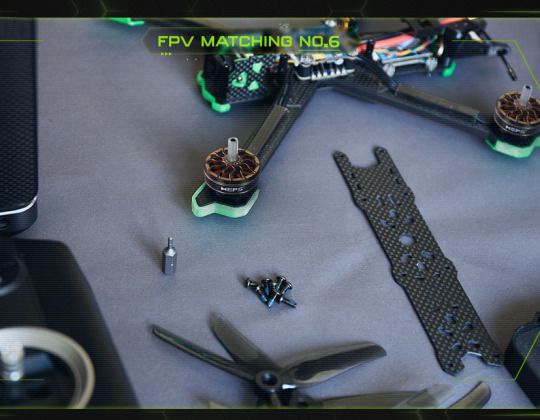
The Ultimate 5-Inch FPV Racing Drone Setup
To achieve the full potential of FPV flight, it's essential to have a well-coordinated setup that encompasses the frame, battery, motor, propeller, and other power systems. Additionally, the remote control system and FPV mapping system need to work seamlessly together. In this guide, we present a comprehensive 5-inch FPV racing drone setup that can help you take your FPV experience to the next level.
5-Inch FPV Racing Drone Matching List
Frame: 224mm HD 5-Inch FPV Racing Drone Frame - Price: $59.57The Mark4-HD frame kit is designed to accommodate the remarkable DJI FPV system. Crafted from full 3K carbon fiber, this frame is not only lightweight but incredibly robust.
Super lightweight freestyle frame
Durable and crash-resistant design
Compatible with DJI FPV Air Unit
Motor: MEPS SZ2207 FPV Racing Drone Motor - Price: $19.90These motors are built for speed and agility, featuring an aluminum alloy 6082 and TC4 reinforced titanium alloy shaft for lightness and enhanced propulsion. They are designed to withstand the rigors of professional racing.
Durable and impact-resistant construction
Unique N52H arc magnets for excellent balance
Suitable for professional FPV racing
Propeller: MEPS SZ4942 Racing Drone Prop - Price: $2.90These propellers are designed for optimal thrust, featuring a special blade design and smooth surface to reduce wind resistance. Made of polycarbonate, they offer both durability and efficiency.
Flight Controller and ESC: SpeedyBee F4 Flight Controller Stack - Price: $79.99This flight controller stack offers versatile configurability. You can adjust settings and tune your quad with ease using the SpeedyBee app. The included 50A 4-in-1 ESC is robust and reliable, making it suitable for demanding 6S setups.
Easy Bluetooth configuration via SpeedyBee app
Powerful 50A 4-in-1 ESC with high-quality components
Ready for high-powered 6S motors
Receiver: Happymodel 0.42g Tiny 2.4GHz ExpressLRS EP1 Nano - Price: $22.99This lightweight and low-latency receiver is ideal for FPV racing and long-range cruising. It offers an impressive range comparable to other leading systems like Crossfire, Tracer, or Ghost.
VTX: SpeedyBee TX800 5.8G FPV Video Transmitter - Price: $31.99The SpeedyBee TX800 offers flexible configuration options. It supports IRC Tramp Protocol and Pit Mode, allowing you to make parameter adjustments conveniently and without causing interference to other pilots.
Antenna: Foxeer 2pcs FPV AntennaHigh-quality FPV antennas to ensure reliable video signal reception.
Battery: CNHL Black Series 1300mAh 6S LiPo Battery - Price: $32.99The CNHL Black Series LiPo battery is designed for high performance, featuring a 100C discharge rate (200C burst). It offers fast charging and quick discharging capabilities, ensuring a long cycle life.
Goggles: iFlight FPV Goggles - Price: $65.99These iFlight FPV goggles feature a 4.3-inch high-brightness LCD with built-in 3.7V/2000mAh battery. They come equipped with an advanced auto-searching function and a super-sensitive 5.8GHz 40-channel receiver.
Transmitter: RadioMaster TX12 MKII ELRS EdgeTX 2.4GHz RC - Price: $800.00This transmitter offers extensive protocol support, internal ExpressLRS RF Module, built-in charging via USB, voice support, and expandable module options.
Camera: FOXEER FPV Camera - Price: $26.99With features like wide dynamic range, lower latency, separate OSD, 0.0001lux illumination, and NTSC/PAL switchability, the FOXEER FPV camera offers excellent image quality and performance.
This carefully selected 5-inch FPV racing drone setup is geared towards performance and reliability, ensuring an excellent FPV flying experience.
1 note
·
View note
Text
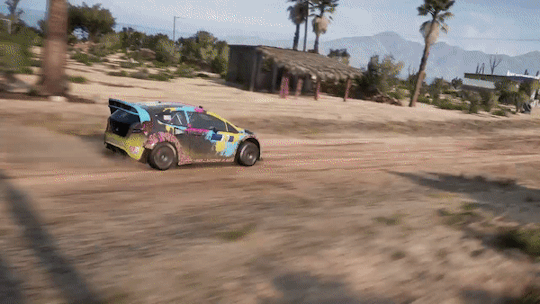

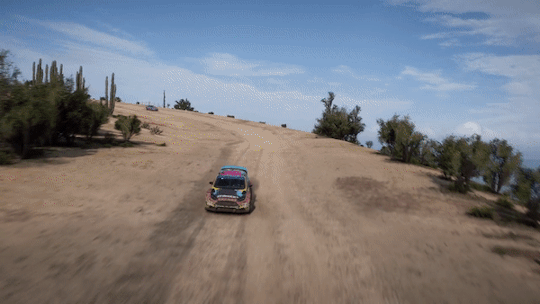
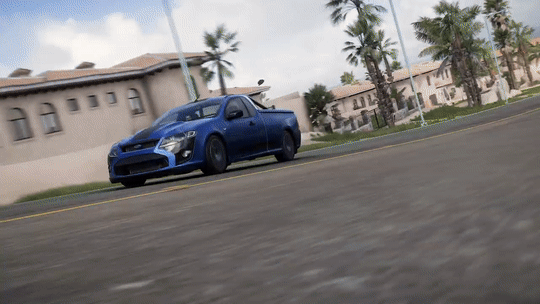


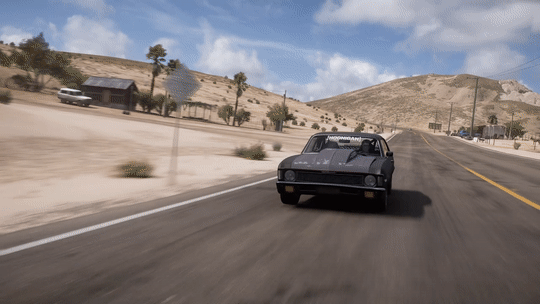
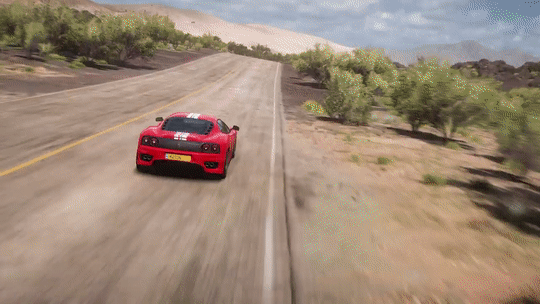
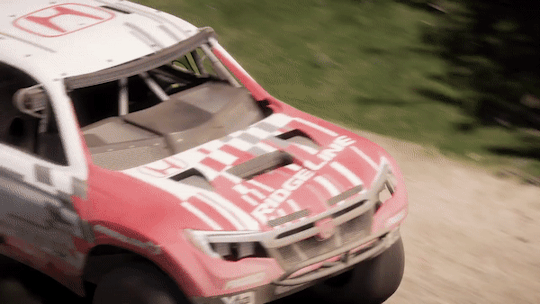
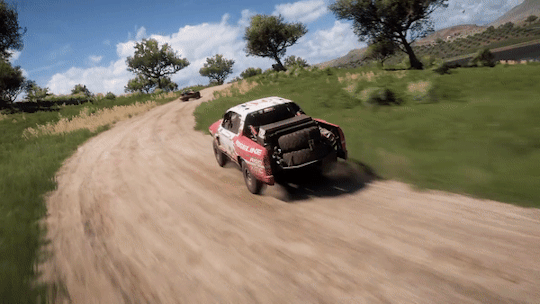
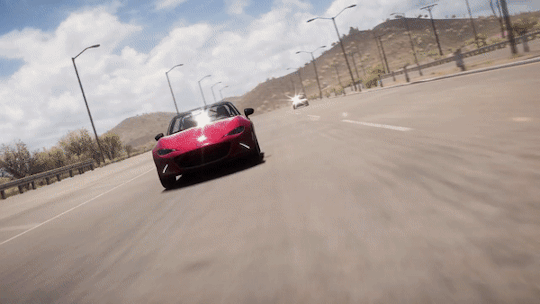
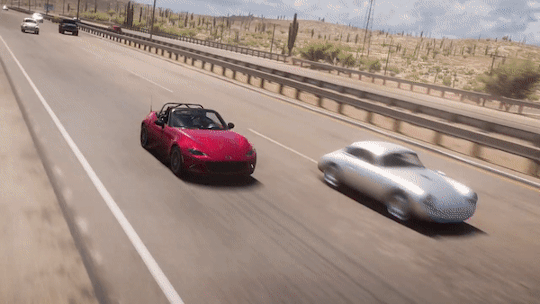
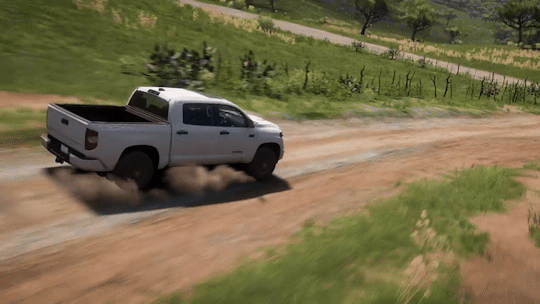
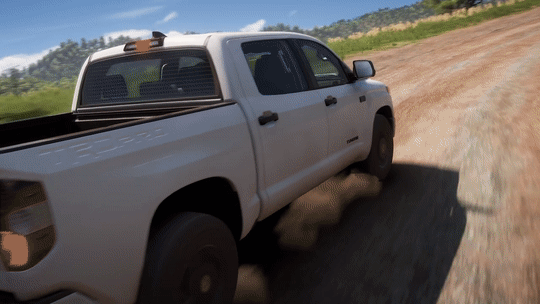

#forza horizon 5#ford rahal letterman lanigan racing grc fiesta#ford fpv limited edition pursuit ute#hoonigan chevrolet napalm nova#ferrari 360 challenge stradale#honda ridgeline baja trophy truck#mazda mx-5#toyota tundra trd pro#forza#forzaedit#forza horizon#caredit#gamingedit#gameedit#videogameedit#gif#gifs
9 notes
·
View notes
Text

Nouveau Kit pour moto

• Nouvelle génération de kit adaptable pour moto. • Système de navigation simplifié. • Moto entre 750cc et 1300cc • Un moteur électrique remplace la roue arrière pour alimenter les turbines électriques. • Chaque turbine a 2 moteurs et 2 hélices connectées qui tournent dans des sens opposés • Vitesse maxi + 280 km/h. • Autonomie 200kms • Bio Fuel + petite batterie pour atterrissage d'urgence • il est conçu pour voler entre 1 m et max 100 m d'altitude...
6 notes
·
View notes
Text
Drone game for training FPV drone, PLAY.
#drone#fpv#fpv drone#youtube#racing#liftoff#game#games#gaming#steam powered giraffe#steam games#steam generation#simulation#fpvlife#fpvfreestyle#fpvracing#fpv system
0 notes
Text
DJI Goggles RE Specifications
Overview In the fascinating world of drones and aerial videography, DJI stands tall as a beacon of innovation. The DJI Goggles Racing Edition (RE) encapsulates this spirit of pioneering advancement. This immersive gear is not merely about viewing; it’s about experiencing. A tantalizing blend of sleek design, ergonomic comfort, and unparalleled video clarity sets the DJI Goggles RE apart. These…

View On WordPress
#commercial drones#diy drones#dji air 3#dji fpv#dji goggles#dji goggles racing edition#dji spark#dji spark specs#drones#fpv drones#fpv system
0 notes
Text
On March 11, Syrian farmer Ali Ahmad Barakat was driving a tractor to his fields in the fertile rebel-held lands of the Al-Ghab plain, just a few miles away from the front line with Assadist forces. For years, Al-Ghab’s farmers had refused to let the violence scare them away from working their fields.
But Barakat was about to become the next victim of a terrifying new Syrian Army-piloted weapon: a dirt-cheap, kit-built suicide drone.
Attacking civilians with drones isn’t new, but until recently, the vast majority of these attacks were carried out by more expensive long- and medium-range drones specifically designed for military purposes—characteristics that limited them to a small number of actors worldwide.
Armed groups such as the Islamic State began to experiment with small, cheap, off-the-shelf and custom-built drones in the 2010s, taking advantage of the consumer drone boom, but their attacks were largely focused on military targets and objectives.
Now, the picture has changed.
Small, inexpensive drones have become an indispensable tool on modern battlefields, as combatants come up with ever more creative ways to use these tiny flying robots. Inspired by these tactics, some fighters in conflicts from Myanmar to Syria are starting to use drone warfare techniques recently refined in the Russo-Ukrainian War, such as the use of tiny and ultra-fast suicide drones crafted from cheap hobby racing kits, as well as consumer camera drones rigged to drop explosives, to target, kill, and terrorize civilians.
And we don’t know how to stop them.
Since Russia first invaded Ukraine in early 2022, I’ve been monitoring the crucial role of small drone technology in the conflict, motivated by the hope that better understanding drone warfare tactics might make it easier to protect civilians from their dangers.
This March, the Syrian White Helmets civil defense group contacted me. According to their information (which has been published in a recent report), more and more civilians in the rebel-held front-line areas were getting attacked with small suicide drones. According to a number of sources, Russian military specialists had recently begun training Syrian Army forces to use both first-person-view (FPV) suicide drones and anti-drone guns. Russia’s drone warfare techniques were beginning to spread.
The attacks have shocked even hardened medics. One White Helmets volunteer, Ali Obied, was in the first group of medical workers to arrive on the scene after Barakat was killed. “When we reached the site, we saw how the suicide drone attacked the driver directly—it killed him and slaughtered him into pieces. We collected the pieces of the driver one by one,” he said. They were forced to withdraw quickly from the scene when, over a walkie-talkie, a spotter informed them that other drones were hovering nearby.
Another volunteer, Walid Abdeen, responded to an attack on April 16 that hit multiple civilian cars and a public market, injuring five people. He was confident that a suicide drone was the culprit, an observation backed up by other witnesses who saw the drone in the air before impact. “When suicide drones explode, nothing remains from it, just small pieces—but the sound of the drone is the same as those drones used by journalists,” Abdeen said.
The volunteers agreed that this similarity to peaceful drones was a problem. “It’s difficult for civilians to differentiate between them in the sky, and all of a sudden, they attack someone—a house, a center, or a car,” said Ismail Alabdullah, a media coordinator and volunteer for the White Helmets.
“Those drones, if they want to kill someone who is walking to his school, or even the White Helmets, if they’re returning to their [medical] centers—the drones can find individuals, attack the centers, kill directly,” Alabdullah added. “We have experience with mortars, rockets, and artillery shelling attacks. But this new weapon is incredibly dangerous because it is so precise and cheap to develop.”
White Helmets representatives say dozens of these FPV drone attacks are happening each week. Thanks to the terror spread by these relentless attacks, civilians who have hung on in Syria’s border regions for years are finally beginning to leave.
These drone-powered mechanisms for spreading mass civilian terror aren’t restricted to Syria: They are also on the rise in Ukraine. Targeted attacks by Russian drones on Ukrainian civilians rose dramatically this summer. And while top U.N. officials condemned this uptick in attacks to the Security Council in March, the onslaught shows no signs of stopping.
From July 1 to 21 alone, I collected 34 separate cases of alleged attacks on Ukrainian civilians by Russian drones, drawing from open-source information posted by official sources in the Ukrainian government. As in Syria, most attacks in Ukraine seem to be taking place near the front lines, where relatively short-range FPV racing and consumer drones can reach, and with the same goal of spreading terror.
On July 2nd, a Ukrainian woman was reportedly injured by an FPV drone while she stood in her backyard in Berislava. Days later, on July 11th, authorities reported that two female volunteers were injured after a Russian FPV drone hit a humanitarian aid delivery point in Stanislav. Then, on July 18th, Kherson Oblast’s governor reported that a 74-year-old man in Oleksandrivka was killed by a Russian drone attack – one of a number of older civilian victims.
Some attacks have hit moving civilian vehicles, including minibuses and personal cars—and a number of clearly marked humanitarian and medical vehicles. On Jan. 26, Ukrainian media reported that a Russian FPV drone had attacked a marked car belonging to an aid worker working with a NGO connected to the U.N. Refugee Agency’s humanitarian mission, destroying the car. A journalist who was riding in the vehicle said that it was “very likely that the operator could see the labels on the car.”
Later, on May 29, a Russian drone attack killed a Ukrainian ambulance driver and seriously injured his wife (who had been riding in the vehicle). Soon after, on June 8, Oleksandr Prokudin, the governor of Kherson oblast, reported that after a spate of shelling in the vicinity of Bilozerka, a Russian drone had attacked an ambulance that arrived on the scene to help, injuring the driver.
The tactic has spread beyond Ukraine and Syria. In Gaza, Euro-Med Human Rights Monitor reports that Israel has increasingly turned to small quadcopters to attack civilians and journalists, while Palestinian sources in Rafah told AFP in June that they lived in fear of “quadcopter drones, which mercilessly target anyone walking.” Israel has long used consumer-type quadcopters and racing drones for military purposes, including to drop tear gas on protesters in Gaza in 2018 and to counter so-called fire balloons sent from Gaza during the same period.
In Myanmar, rebel groups fighting the military junta have become adept at using small, cheap consumer and custom-built drones for both intelligence-gathering and for attacks. In recent months, Myanmar’s junta has begun to catch up: In September and October 2023, villagers in the Sagaing region said they were repeatedly attacked by bomb-dropping regime drones.
In another incident this July, the Insecurity Insight NGO reported that armed Myanmar military drones attacked a health center in the Sagaing region, killing a midwife, her two-year-old child, and at least five patients affiliated with the local resistance forces, as well as injuring at least 15. The patients who were killed reportedly had been injured in an earlier military drone attack, and had been seeking care for their injuries at the time
Mexico’s drug cartels, too, have become frequent users of consumer and DIY drones in recent years, both for smuggling and for terrorism. Like Bashar al-Assad’s forces, the cartels appear to view these sudden, shocking drone attacks as an effective way to terrorize civilians into ceding strategically valuable territory. In May 2023, more than 600 people were reportedly displaced from communities in Mexico’s Guerrero state due to cartel drone attacks, and attacks since then in the state have reportedly killed civilians and targeted local schools.
These tactics are spreading, and there is little guidance for civilians, including journalists and aid workers, on how to deal with them. Most existing writing on the subject is geared toward attacks from larger, more powerful, and stealthier long-range military drones.
Thankfully, there are some things the international community can start doing today.
National and international bodies and organizations concerned with civilian protection, such as the United Nations and the International Committee of the Red Cross, should come together to strategize around how best to protect people from small drone attacks. These groups should loudly condemn the terrorist attacks and investigate possible violations of international humanitarian law—as well as sponsoring the research and reporting needed to better understand the problem.
Russia’s war in Ukraine has led to the rapid development of new technologies for detecting drone radio signals in the air, new tools for electronically disabling drones, and a wide variety of other basic drone defense tactics (including the revelation that you can hide from thermal sensors by throwing a yoga mat over your head). Perhaps some of these tools and tactics could be adopted for civilian use.
Finally, we need more collective clarity around the legality of attacks on civilians with small drones under international humanitarian law as well as the legality of civilian efforts to defend themselves. Currently, interpretation of the law doesn’t adequately account for tiny flying robots in combat. As I wrote with my colleague Ossama A. Zaqqout in 2018 (and again in 2022), the presence of identical-looking small drones in the airspace over today’s conflicts makes it very hard for people on the ground to tell whose drone is whose.
Under international humanitarian law’s principle of distinction, combatants must distinguish themselves from civilians—but unlike manned aircraft, drones are too small to carry marks visible from the ground, and they can’t respond to radio checks. We need better solutions to avoid these cases of mistaken identity.
There’s also uncertainty around how humanitarian law might apply to civilian efforts to anticipate—and defend themselves against—drone attacks. Will civilians lose their noncombatant status if they use counterterrorism tools against small drones? Do civilians lose protection if they monitor radio waves for armed drone presence and report that information to combatants—or if they post that information online in a public place?
As is the case with so many other novel consumer technologies, we’ve swiftly figured out how to use drones both to help humanity and to hurt it. But civilians aren’t doomed to be easy targets—as long as we summon the international will to find ways to protect them.
15 notes
·
View notes
Text
ough got tetris effect from too much fpv racing simulator got out of chair while thinking to myself that i needed to push up on the right joystick
16 notes
·
View notes
Text
Mepsking engine test with fly test #motores #mepsking #mepskingfpv #mepskingmotor #meps #mepsfpv #mepsmotor #racing #fpv #race
3 notes
·
View notes
Text

Applications of Brushless Motors
Brushless motors are employed in a wide array of industries and products, each benefiting from their exceptional capabilities. Here are some prominent applications:
Drone Technology: The burgeoning drone industry heavily relies on brushless motor technology. These motors provide the necessary power, efficiency, and precise control required for stable flight and agile maneuvering. Whether for DIY drone enthusiasts or professional-grade FPV racing drones, brushless motors are the preferred choice due to their reliability and superior performance.
Electric Vehicles: The automotive sector has embraced brushless motors for electric and hybrid vehicles. These motors offer high efficiency, precise speed control, and a compact form factor, making them ideal for powering electric cars, motorcycles, and various other electric transportation systems. Improved energy conversion and reduced maintenance contribute to the feasibility of electric vehicles as a sustainable mode of transportation.
Industrial Automation and Robotics: In industrial automation and robotics, brushless motors deliver the necessary torque, speed control, and reliability for precise movements and demanding applications. Whether it's robotic arms on assembly lines or automated machinery, brushless motors provide superior performance and extended lifespan compared to their brushed counterparts.
HVAC Systems and Appliances: Brushless motors have made their way into heating, ventilation, and air conditioning (HVAC) systems, as well as household appliances such as refrigerators and washing machines. These motors ensure efficient and dependable operation, contributing to energy savings and enhanced overall performance.
Selecting and Using Brushless Motors When it comes to choosing the right brushless motor for your specific application, several critical factors warrant consideration:
Power and Torque Requirements: Assess the power and torque requirements of your application to choose a brushless motor capable of delivering the necessary performance. Take into account factors like load demands, speed prerequisites, and any unique power requirements pertinent to your application.
Motor Size and Weight: Consider the available space and weight limitations when opting for a brushless motor. Compact and lightweight designs prove advantageous in scenarios where size and weight hold paramount importance, such as drones or portable devices.
Controller and Flight Control System: Ensure seamless compatibility between your chosen brushless motor and the associated controller or flight control system. A well-matched system guarantees optimal performance and dependable operation.
Quality and Reliability: Source brushless motors from reputable manufacturers recognized for producing high-quality and dependable products. Consider aspects such as warranty coverage, customer feedback, and the manufacturer's standing within the industry when making your selection.
0 notes
Photo

RC FPV Quadcopter Racing Drone ... Price 147.19$ CLICK TO BUY
0 notes
Text


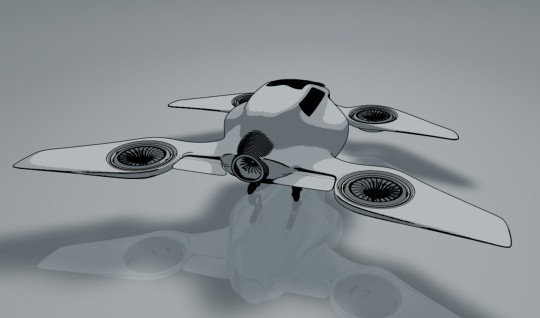
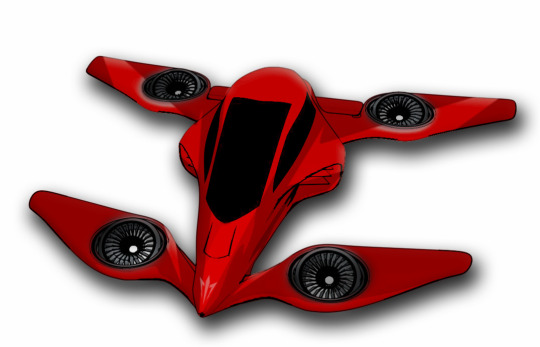
eVTOL Air RACER F1 le Buzzaxe H5 et une version tourisme 3 places "plus large" Concept eTurbine ZT
2 notes
·
View notes
Text
Frame India: Building Blocks for Indian Skies
In the rapidly evolving world of drones and aerial robotics, Quadcopter Frame India plays a crucial role. These frames serve as the foundational structure for building quadcopters, the most common type of drone. From hobbyist enthusiasts to professional aerial photographers and researchers, the demand for high-quality and innovative Quadcopter Frame India is steadily increasing.
RC Mumbai, your one-stop-shop for all your drone needs in India. We offer a wide range of high-quality Lipo batteries, drone accessories, multirotor parts, and FPV racing accessories.
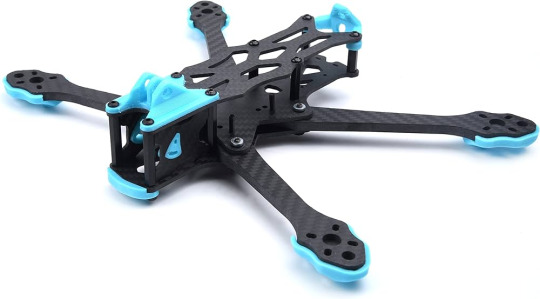
Understanding Quadcopter Frames
A quadcopter frame is essentially the skeleton of a drone. It provides the structural support for all the essential components, including:
Motors: Responsible for propelling the drone.
Electronic Speed Controllers (ESCs): Control the speed and direction of the motors.
Flight Controller: The brain of the drone, responsible for processing flight data and controlling the drone's movements.
Battery: Provides the power source for the entire system.
Payloads: Cameras, sensors, and other equipment carried by the drone.
Types of Quadcopter Frames
Quadcopter Frame India comes in various designs and materials, each with its own advantages and disadvantages:
Carbon Fiber Frames: Known for their exceptional strength-to-weight ratio, carbon fiber frames are popular among professional drone pilots and racers. They offer high rigidity and excellent vibration damping, resulting in smoother flight performance.
Aluminum Frames: More affordable than carbon fiber, aluminum frames provide a good balance of strength and weight. They are a popular choice for hobbyists and those building drones on a budget.
Plastic Frames: These frames are lightweight and inexpensive, making them ideal for beginners and educational purposes. However, they may not be as durable as carbon fiber or aluminum frames.
DIY Frames: Many drone enthusiasts opt for building their own Quadcopter Frame India from scratch using materials like wood, 3D-printed parts, or custom-made components. This allows for greater customization and creativity in drone design.
Factors to Consider When Choosing a Quadcopter Frame
Payload Capacity: The frame must be able to support the weight of the drone's components, including the battery and any attached payloads.
Flight Style: The type of flying you intend to do (racing, photography, long-range flights) will influence your frame choice.
Budget: Frame prices can vary significantly depending on the materials used, complexity of the design, and brand.
Ease of Assembly: Some frames are easier to assemble than others, which can be a crucial factor for beginners.
The Future of Quadcopter Frame India
The future of Quadcopter Frame India looks promising. Advancements in materials science, 3D printing technology, and drone technology are driving innovation in frame design. We can expect to see lighter, stronger, and more customizable frames in the coming years.
Conclusion
Quadcopter Frame India plays a vital role in the development and advancement of drone technology in the country. By providing a strong and reliable foundation for drones, these frames enable a wide range of applications, from aerial photography and videography to precision agriculture, disaster relief, and scientific research. As the drone industry continues to grow, the demand for high-quality and innovative Quadcopter Frame India is expected to increase significantly.
0 notes
Text
CZ: FPV racing je vzrušujícím a rychle se rozvíjejícím sportem, který spojuje vášeň pro létání s adrenalinovým zážitkem z rychlosti a soutěžení. Piloti ovládají malé bezpilotní letouny nebo drony vybavené kamerami a vysílači, které jim umožňují sledovat let z první osoby. Tímto způsobem mají pocit, že sedí uvnitř letounu a létají ve vysokých rychlostech přes různé tratě plné překážek.
Chcete se mnou pořádat FPV racing? Kontaktujte mě! Link: www.pilotfpv.cz
EN: FPV racing is an exciting and fast-growing sport that combines the passion for flying with the adrenaline-pumping experience of speed and competition. Pilots control small unmanned aircraft or drones equipped with cameras and transmitters that allow them to observe the flight from the first person. In this way, they feel like they are sitting inside an airplane and fly at high speeds through various courses full of obstacles.
Do you want to do FPV racing with me? Contact me! Link: www.pilotfpv.cz
#fpv#drone#drones#Racing#LeagueCup#fresh#sports#race#Pilot#pilotlife#league#Content#Contest#fpv drone
1 note
·
View note
Text
Exploring the SpeedyBee F405 V4 BLS 55A 30x30 ESC&FC FPV: A High-Performance Drone Flight Control System
In the world of drones, the flight control system (FC) and electronic speed controller (ESC) are two key components that directly influence the stability, maneuverability, and overall flight experience of the drone. In recent years, as FPV (First-Person View) drones have gained popularity, a range of excellent flight control systems have emerged on the market. Among them, the SpeedyBee F405 V4 BLS 55A 30x30 ESC&FC FPV stands out for its outstanding performance and highly integrated design, making it a top choice for drone enthusiasts and competitive pilots alike. Today, we will dive deeper into this flight control system to help you better understand its functionality, advantages, and how to maximize its potential in your drone.
What is the SpeedyBee F405 V4? The SpeedyBee F405 V4 is a high-performance flight controller designed by SpeedyBee. It utilizes the advanced F405 chip, which provides powerful computing capabilities and precise flight control for drones. The F405 V4 is built to offer a balance between performance and stability, making it suitable for FPV racing, freestyle flying, and other complex flight scenarios. Its key advantage lies in its ability to process high-speed data and support multiple sensors, enabling highly accurate and smooth flight control.
Core Components: BLS 55A ESC and Integrated Design Unlike many traditional flight controllers, the SpeedyBee F405 V4 BLS 55A 30x30 ESC&FC FPV system adopts an integrated design. The ESC (electronic speed controller) is one of the critical components of the drone's power system. It is responsible for controlling the speed of the motors, ensuring they operate accurately according to the flight controller’s commands. This flight control system comes equipped with a 55A ESC, which can handle up to 55 amps of current per channel, making it suitable for high-power motors, particularly in FPV racing and high-speed flights.
The 55A ESC provides sufficient current for the motors, ensuring that the drone operates smoothly under various load conditions. For FPV drone enthusiasts, this means that even in high-demand situations or when the drone is subjected to instant high loads, the SpeedyBee F405 V4 can still deliver the necessary power output, ensuring smooth and safe flight performance.
30x30mm Mounting Hole Distance: Compatibility and Compact Design The size and layout of the drone frame often place high demands on the flight controller selection. The SpeedyBee F405 V4 BLS 55A 30x30 ESC&FC FPV system features a 30x30mm standard mounting hole distance, making it compatible with most FPV drone frames that follow this standard. This design allows the flight controller to be securely mounted in a variety of frames while maintaining a compact size that reduces the drone's weight and enhances overall performance.
This compact and efficient design is essential in FPV racing, where every gram of weight impacts the drone’s speed and maneuverability. In racing, minimizing the drone’s weight directly influences flight speed and handling responsiveness. By integrating the ESC and flight controller into a single unit, SpeedyBee F405 V4 reduces wiring complexity and installation time, making it easier to assemble and enhancing the flying experience.
Supporting 3-6S Batteries: Flexible Power Options Another noteworthy feature of the SpeedyBee F405 V4 BLS 55A 30x30 ESC&FC FPV system is its support for 3S to 6S batteries. This means that it is compatible with a range of battery configurations, from the lower voltage 3S batteries to higher voltage 6S batteries. The choice of battery directly impacts the drone's flight time, power output, and responsiveness. For long-duration flights or high-intensity applications, the 6S battery support allows for stronger power output and longer flight times.
3S batteries are ideal for beginners and lighter flight applications, while 6S batteries are typically used in racing and high-performance flights. By supporting a wide range of battery configurations, the SpeedyBee F405 V4 offers greater flexibility, allowing users to select the most suitable power setup based on their flight needs.
FPV Flight and Real-Time Video Transmission The core advantage of FPV flying lies in offering a first-person view, allowing pilots to have a more intuitive and immersive control experience. The SpeedyBee F405 V4 BLS 55A 30x30 ESC&FC FPV system fully supports FPV flying, seamlessly connecting with FPV cameras and video transmission systems. Pilots can wear FPV goggles to experience a real-time view from the drone, providing an immersive flying experience.
The integrated design of the flight controller and video transmission system ensures that the entire flying process is smoother. It not only reduces flight control latency but also improves the stability of video transmission. In racing or complex flight conditions, pilots need millisecond-level responsiveness, and the SpeedyBee F405 V4’s high-performance flight controller and low-latency video transmission ensure precise control and efficient flying.
Conclusion: Why Choose the SpeedyBee F405 V4 BLS 55A 30x30 ESC&FC FPV? From the above analysis, it’s clear that the SpeedyBee F405 V4 BLS 55A 30x30 ESC&FC FPV is a highly integrated, high-performance flight control system ideal for FPV racing and recreational flying. It not only supports efficient motor control but also features powerful flight control capabilities and broad compatibility, making it suitable for a variety of flying needs.
The advantages of the SpeedyBee F405 V4 include:
A high-integrated design that reduces wiring complexity and improves installation convenience. A powerful 55A ESC that ensures stable operation for high-power motors. A 30x30mm standard mounting hole distance, making it compatible with most FPV frames. Support for 3S to 6S batteries, providing flexibility for different power setups. Excellent FPV support, ensuring stable and smooth real-time video transmission. If you're looking for a high-performance and easy-to-install flight control system, the SpeedyBee F405 V4 BLS 55A 30x30 ESC&FC FPV is undoubtedly an excellent choice. It’s not only ideal for racing pilots but also for those seeking a stable and efficient flight experience. Whether you're a beginner or an experienced pilot, this flight control system will deliver a flying experience that meets your needs.
0 notes
Text
NATO concluded a major anti-drone exercise this week, with Ukraine taking part for the first time as the Western alliance seeks to learn urgently from the rapid development and widespread use of unmanned systems in the war there.
The drills at a Dutch military base, involving more than 20 countries and some 50 companies, tested cutting-edge systems to detect and counter drones and assessed how they work together. The 11-day exercise ended with a demonstration of jamming and hacking drones in a week when their critical role in the Ukraine war was demonstrated once again. On Wednesday, a large Ukrainian drone attack triggered an earthquake-sized blast at a major Russian arsenal. The following day, Russian President Vladimir Putin said Moscow was ramping up drone production tenfold to nearly 1.4 million this year. The proliferation of drones in the war – to destroy targets and survey the battlefield – has prompted NATO to increase its focus on the threat they could pose to the alliance. "NATO takes this threat very, very seriously," said Matt Roper, chief of the Joint Intelligence, Surveillance and Reconnaissance Centre at the alliance's technology agency. "This is not a domain we can afford to sit back and be passive on," he said at the exercise site, Lieutenant General Best Barracks in the east of The Netherlands. Experts have warned NATO that it needs to catch up quickly on drone warfare. "NATO has too few drones for a high-intensity fight against a peer adversary," a report from the Center for European Policy Analysis think tank declared last September. "It would be severely challenged to effectively integrate those it has in a contested environment."
The drills that wrapped up on Thursday – complete with ice cream for onlookers provided by a radar company – were the fourth annual iteration of the exercise. Claudio Palestini, the co-chair of a NATO working group on unmanned systems, said the exercise had adapted to trends such as the transformation of FPV (first-person view) drones - originally designed for civilian racers – into deadly weapons. "Every year, we see an evolution of the threat with the introduction of new technology," he said. "But also we see a lot of capabilities (to counter drones) that are becoming more mature." In a demonstration on Thursday, two small FPV drones whizzed and whined at high speed through the blue sky to dart around a military all-terrain vehicle before their signal was jammed. Such electronic warfare is widespread in Ukraine. But it is less effective against long-range reconnaissance drones, a technology developer at Ukraine's defense ministry said. The official, giving only his first name of Yaroslav for security reasons, said his team had developed kamikaze drones to destroy such craft – a much cheaper option than firing missiles, which Ukraine had previously done. "You need to run fast," he said of the race to counter the impact of drones. "Technology which you develop is there for three months, maybe six months. After, it's obsolete."
10 notes
·
View notes
Video
youtube
Intermodellbau 2024 in Dortmund | Drones | FPV-Racing | Airplanes | Ship...
0 notes